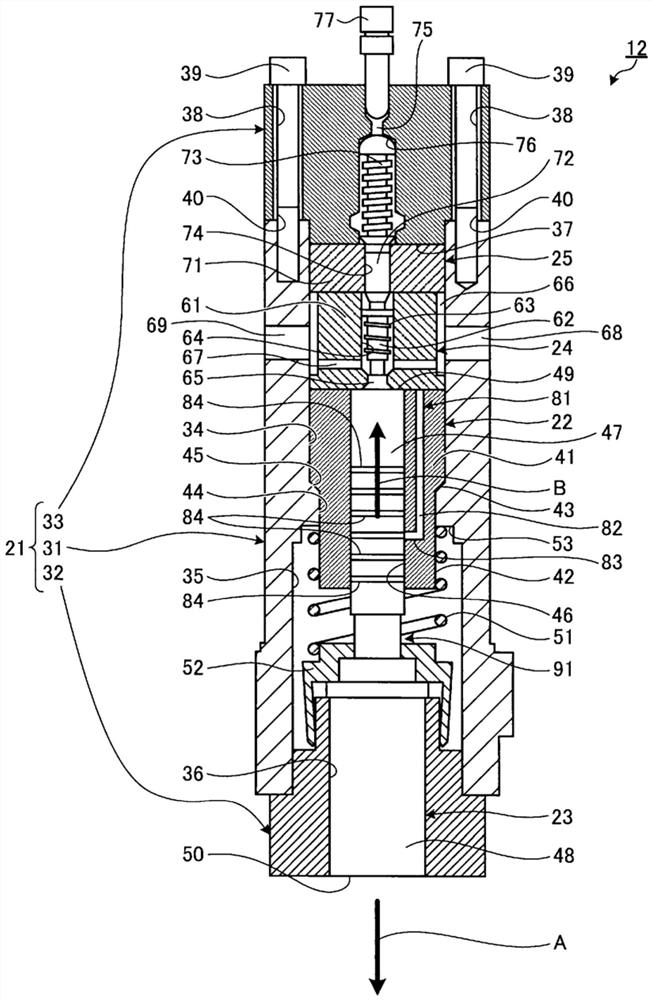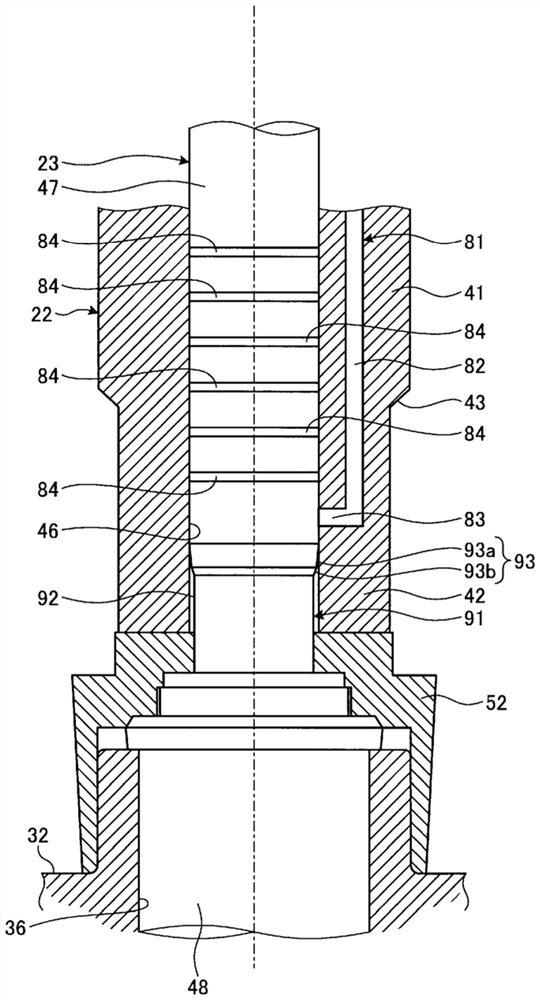Fuel injection pumps, fuel injection devices, internal combustion engines
A fuel injection pump and fuel injection valve technology, which is applied to fuel injection devices, fuel injection pumps, charging systems, etc., can solve problems such as poor plunger action and bite, and achieve the effect of suppressing poor action.
- Summary
- Abstract
- Description
- Claims
- Application Information
AI Technical Summary
Problems solved by technology
Method used
Image
Examples
Embodiment Construction
[0036] Preferred embodiments of a fuel injection pump, a fuel injection device, and an internal combustion engine according to the present invention will be described in detail below with reference to the drawings. In addition, this embodiment does not limit this invention, and when there are several embodiments, the embodiment which combined each embodiment is also included.
[0037] Image 6 is a schematic configuration diagram showing a fuel injection device according to the present embodiment.
[0038] In this embodiment, if Image 6 As shown, the fuel injection device 10 is mounted on a large marine diesel engine (internal combustion engine) mounted on a ship. The fuel injection device 10 includes a fuel injection valve 11 , a fuel injection pump 12 , and an accumulation control valve block 13 .
[0039] The fuel injection valve 11 injects fuel (C heavy oil) into a combustion chamber of a diesel engine (not shown). A fuel injection pump 12 pressure-feeds fuel to the f...
PUM
 Login to View More
Login to View More Abstract
Description
Claims
Application Information
 Login to View More
Login to View More - R&D
- Intellectual Property
- Life Sciences
- Materials
- Tech Scout
- Unparalleled Data Quality
- Higher Quality Content
- 60% Fewer Hallucinations
Browse by: Latest US Patents, China's latest patents, Technical Efficacy Thesaurus, Application Domain, Technology Topic, Popular Technical Reports.
© 2025 PatSnap. All rights reserved.Legal|Privacy policy|Modern Slavery Act Transparency Statement|Sitemap|About US| Contact US: help@patsnap.com



